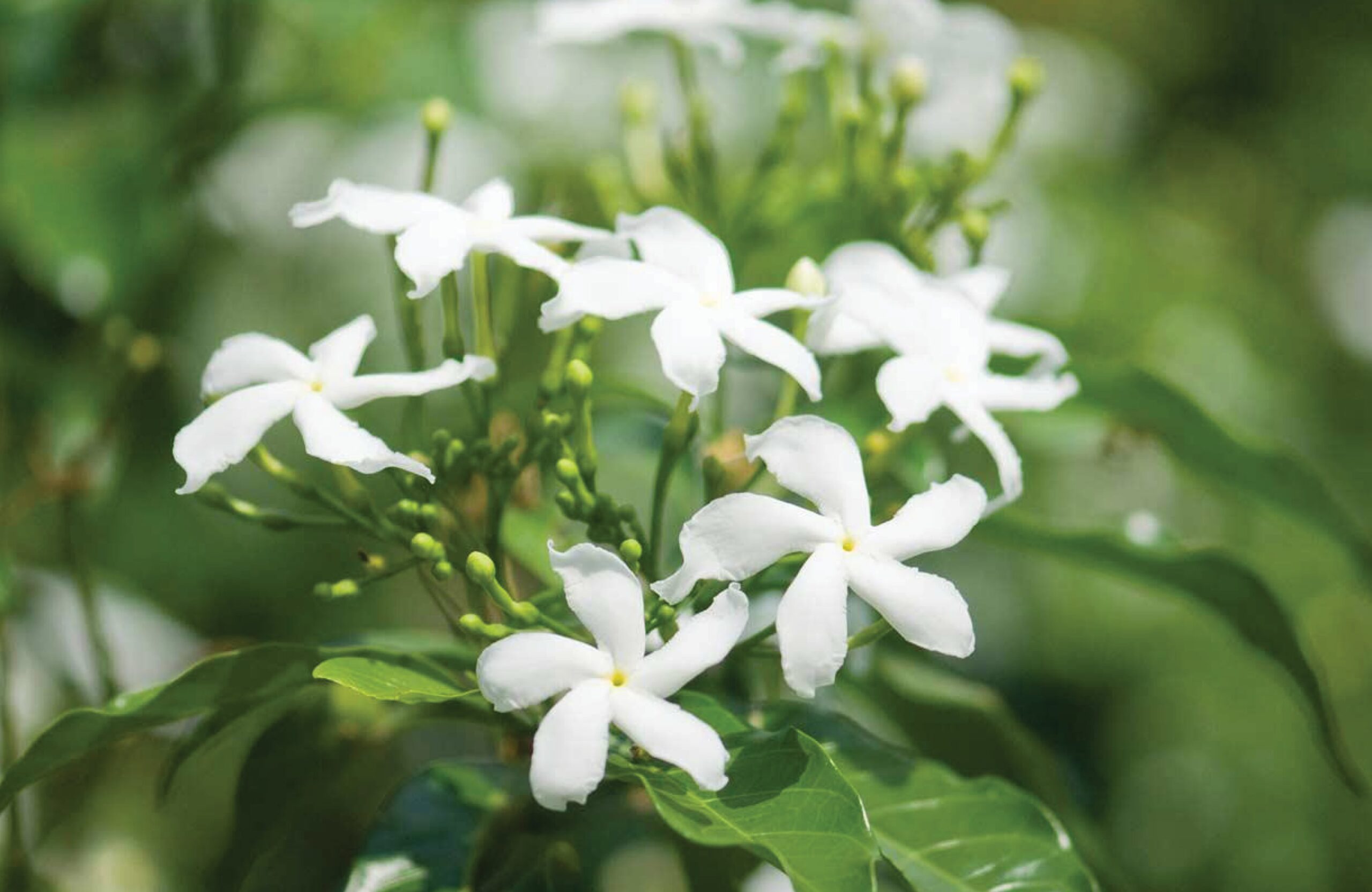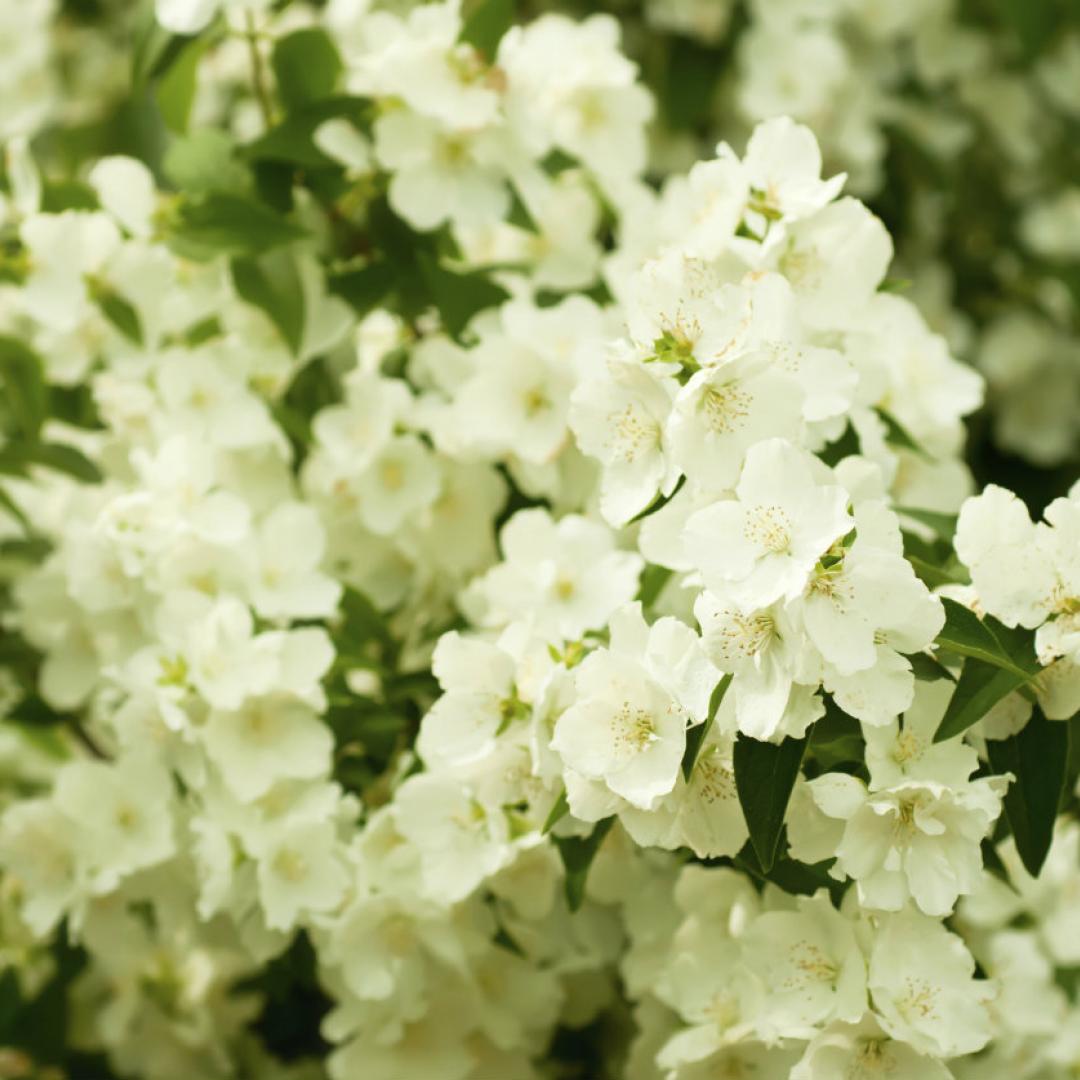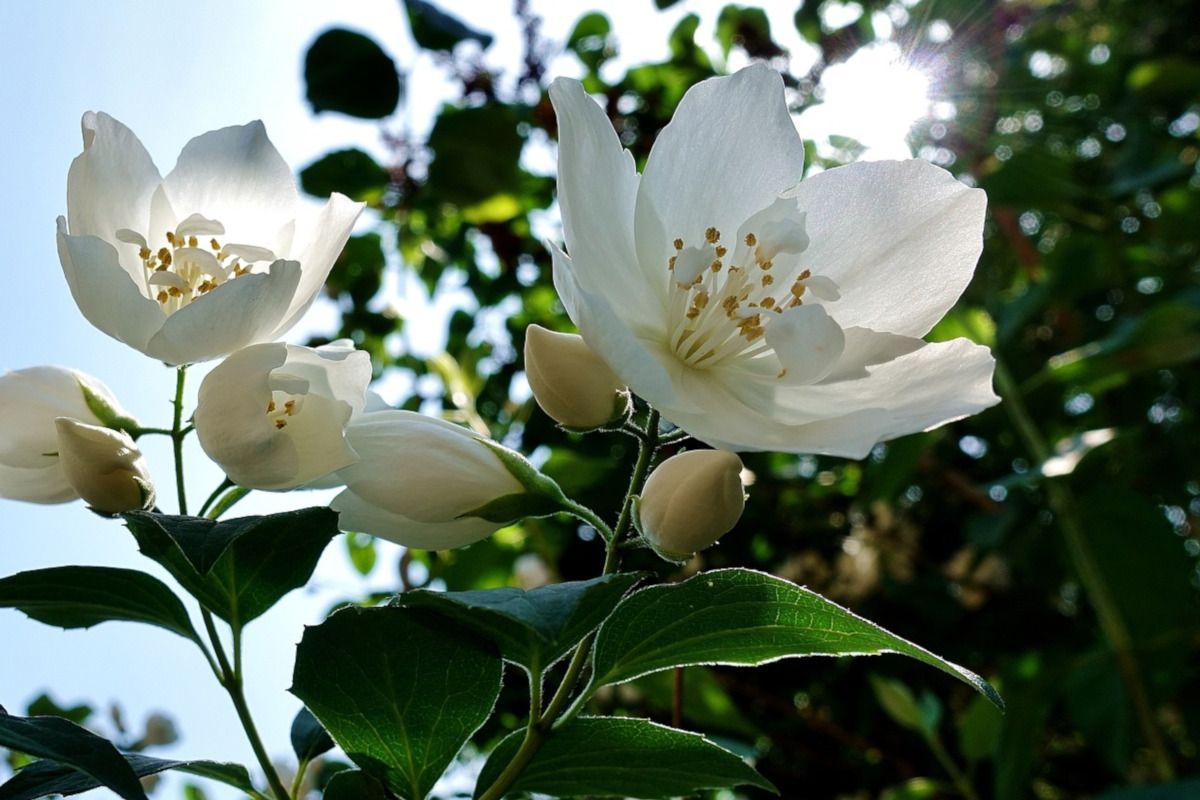Jasmine is a very popular climbing and rural shrub, which has one of the most delicate and mystical flowers that can exist, in addition to flowers that emanate exquisite fragrances, which show purity and charm, in this post we invite you to know how take care and prune jasmine, so that it grows beautiful and healthy.

What is a Jasmine?
Those of its kind include more than 200 kinds of flowers and its scientific name is Jasminum, which comes from the Persian Yasmin, which has the following meanings; fragrance and gift of God. This is a flower that is distinguished from the others at night and that is why it is also known as queen of the night, these are highly appreciated for their beautiful flowers and pleasant aromas.
El Jazmín It is very common in gardens, originating in the Middle and Far East, where it was once part of the gardens of the imperial palace.
This plant is widely used to decorate walls, rooms and all kinds of environments, all thanks to its beautiful flowers. For this reason, it would be very useful to learn everything necessary about its cultivation and the care it requires to grow so beautiful, and to be able to offer us its beautiful flowers full of pleasant perfumes.
Characteristics of Jasmine
Jasmine comes from the old continent, more specifically from tropical and subtropical territories where planting is very common, they grow in the form of bushes, vines, in flowerpots and hung on structures, places in which they adapt and develop.
Its flowers are very subtle, white in color and its leaves have inserted leaflets, they have a rich aroma, they also have a fruit in the shape of a small black pumpkin when it is ripe and have from 1 to 4 little seeds. It should be noted that this plant needs a lot of extension to be able to grow at ease, for that reason it is recommended to plant in large pots that contain a lot of soil.
They also need a lot of water and sun, to grow healthy and strong, they must be in the place where they are located, a place covered by winds and not frozen, so it is always better to plant them in greenhouses. These bloom between August and September, after two years of being grafted they have their full bloom.
Jasmine is a highly commercialized plant, it is sold to make fragrances and air fresheners, thanks to the fact that they are produced in large quantities during the year, which are approximately between 15 and 20 tons, mainly for export in the hands of perfume manufacturers. , the major Jasmine producing countries are France, Morocco, Egypt, India, China and Italy.
Medicinal Characteristics
Jasmine is used to carry out aroma therapies, since it works as a muscle relaxant and analgesic, it also provides its medicinal contribution, since it serves as an infusion to make extracts that relieve bronchial colds, antidepressants, aphrodisiacs, calming and anti-stress, from this it can also be extract oil that is then used to give body massages and for cosmetic use.
From this plant you can use the juice of the flowers and their essences, since they have many excellent properties for human use, such as vulnerary and antiseptic, it can be used to calm stomach upsets, asthma, bruises, intimate hygiene and skin problems, chemically it contains the essence of jasmine, it also contains ketone and jasmone, which is responsible for its fragrance, linalool, lanalyl acetates, and benzyl.
Types of Jasmine
Many Types of flowers of Jasmines, however these can be classified by groups depending on their growth characteristics, such as:
Climbing Jasmine
The climbing jasmine is a beautiful plant in the form of vines, which has white flowers with pleasant perfumes, these can be used as climbing bushes in decoration or planted in a spacious soil to cover it, among the species of this Jasmine are that of winter, asian and star.
Pot Jasmine
The potted jasmine is a beautiful climbing shrub, which, despite everything, does not grow much and is very similar to the rest of the plants, but it is capable of producing a lot of flowering during the spring times, among the types of potted jasmine we find the Jasminum Officinale or common jasmine, and Jasmine Polyanthum, also known as Chinese or climbing jasmine.
Shrub Jasmine
Bush jasmine is a kind of plant that manages to have enormous magnitudes, they have green and perennial leaves, each of its branches has approximately seven pinnae, some of which are long and others short, its flowers grow mostly solitary, and each segment has three more that begin to open independently of each other.
Like the vast majority of the jasmines, are similar in that they have rich aromas and fragrances, among the types of bush jasmine are the winter or yellow jasmine, and Jasmine Grandiflorum.
When to prune Jasmine?
To know precisely when is the right time to prune your jasmine, you must first take into account some aspects, such as knowing what type of jasmine it is, whether it is winter or summer, although the most common is Jasminum Officinale, which it blooms in summer and that means that this type of jasmine should be pruned in winter, when the freezing temperatures are gone, and at the first moment that spring temperatures arrive, as this will help during this growing time, the jasmine can recover from the wounds caused by pruning and can heal.
In the same way, it can be done after its flowering, the procedure must be carried out leaving two or three bud buttons on the stem, which promotes its development when the new season arrives.
If this is the case of winter Jasmine, pruning must be done after it blooms, which is usually between the months of March and April. Jasmine bushes must also be pruned when they are young or during their first years, since doing so will help encourage their development, this also helps to give them the shape we want.
How to prune Jasmine?
The plant has more than 200 species, therefore, the pruning of these can vary according to their type and according to each case, that is, according to the group they belong to, the pruning can be carried out, since the most influential is always the species. to which it belongs.
The first step we must take to prune jasmine, is to know what type it belongs to and then we must properly sterilize the tools with which we are going to work, this must be done before and after pruning, then the following suggestions must be followed in order to carry out the pruning procedure of a appropriate form:
How to prune Climbing Jasmine?
The Climbing Jasmine or Creeping Jasmine, are native to tropical climates, their name is based on the way they develop and climb on any surface, or on other plants, where, like most jasmine, it has a very strong perfume. particular.
This type of species is sometimes one of the most difficult to prune, because its stems are usually intertwined and super united, for this the following steps must be followed:
- First we must start from the bottom, always checking one stem at a time and each one separately.
- The branches that are more intertwined should be pruned and leave the ones that we want to keep on the plant, that is, those that are developing correctly.
- Then we must try to unravel and place them with our hands in the correct direction, and thus avoid cutting them at once.
- Everything that is necessary must be cut, so we can give balance to our plant and remove weight that is necessary, so that it can develop correctly.
How to prune Shrub Jasmine?
For the Jasmines of the bush type, pruning is essential to take care of their beauty and health, it also provides them with a better shape and size as a plant, in addition to also serving to ensure that adequate ventilation and sunlight enter correctly. However, when we go prune jasmine of bush, we must review the pruning that has been done in previous years, so we can maintain the same shape and for this we must follow the following steps:
- Branches should be trimmed so that they grow completely horizontally.
- Then you have to get rid of all those that grow towards the interior of the plant.
- Of the parallel branches that are paired, one should be cut and one left, in this way they can have better air intake and future fungal problems are avoided.
- The sprouts of the lower part must also be eliminated and thus avoid having weak parts that may develop into problems.
How to prune Potted Jasmine?
This type usually grows a lot, the Jasmines Potted plants require more constant pruning and care, in order to control their shape and size, for this we must follow these steps:
- They should be pruned after the flowering season, an approximate where the new shoots come out is cut, so that they can develop in their new season.
- A the jasmines of pot you must prune the part of its roots, whenever they are planted or taken from one place to another or if you are going to place it in a larger place.
- They should be pruned only to perform constant maintenance and to remove everything that is in poor condition, in addition to removing all the parts that are not useful or that add weight to them.
Cleaning Pruning for Jasmine
The Jasmine must receive several times a year a cleaning pruning, to remove some excesses, such as the branches that are dry, because in the case of the so-called suckers it is better to take care of them at the end of the winter season, it is for this reason that before Recognize which branches so that cleaning pruning can be carried out. Branches can be identified based on the following:
- Branches that look dead, broken, or dry.
- Pieces of branches that have no buds or are dead.
- Foot buds that are misplaced.
- Branches that have a bad orientation or are growing crossed.
- Branches protruding from the bush due to excess intensity.
- Fruits and flowers that are too heavy for the plant.
This cleaning pruning must be carried out every certain period of time, without letting this happen for a long time, since if it is not done, the branches end up getting entangled and this will cause them to look ugly.
Basic Jasmine care
The care that we must give to the beautiful Jasmine plant so that it is healthy and in good condition, are the following:
- Land: Jasmine should be planted in loose soil, and a little sand could be added to it as long as it has good drainage, and some organic matter can also be added.
- Climate: These plants can adapt to various types of temperature, however they grow better in warm climates, and are very frost-tolerant, that is, they should not be placed in temperatures below 0° C.
- Subscriber: It is important that this plant receives a good fertilizer so that its flowers can develop in good condition, for this a good fertilizer must be used.
- LuzAppearance: This bud needs as much light as possible, both indoors and outdoors, as this will be a much-needed aspect for it to flourish and grow.
- Irrigation: The Jasmines They must be watered at least three times a week in the months with warm temperatures and in prudent amounts, the amount of water that is placed should not overflow, while on the other hand in the months with cold temperatures, it should be done once per week and watering when it rains is not recommended.
- Pinch Technique: There is a practice that can be done to Jasmine when it is still young, which, as its name indicates, consists of something similar to a pinch, where the tip of the branches in which new shoots are coming out is bent, it is done in the spring season and this helps the plant to branch out a little more, this procedure should be repeated at all times when new shoots come out, so a thicker Jasmine will be obtained.
Jasmine Pruning Tools
The tools that should be used when pruning a jasmine plantation are very simple, although everything will depend on the type of Jasmine it is, its size and age, according to all these characteristics the tools could be the following :
- Have some garden shears available.
- If they are very high, it is necessary to have some stairs.
- It is necessary to have basic safety elements such as protective glasses and gloves.
- You must have a pruner.
Prune Jasmine according to its Species
As we mentioned before, this is an aspect that greatly influences when it comes to prune jasmine:
Jasmine Officinale
The common jasmine is native to the Asian continent, however, currently it can be found in Europe and the United States, they are of the climbing type and their average height can be 6 meters, they have bouquets of beautiful white flowers made up of 5 petals, the which should always be watered taking into account their location, but usually this work is done weekly or every two weeks.
A common jasmine must be pruned after it blooms, work that must be done whenever required, as it is the way in which these plants can grow healthy, in good condition and beautiful.
Gardenia Jasminoides Jasmine
Also known as Cape Jasmine and this falls into the classification of bush jasmine, which is widely used for internal planting, however, they need light to grow. They bloom in times of summer, and this type of Flora it is more likely to grow in soil and territories with high humidity, or in compensation it needs a constant irrigation system.
They have large flowers that grow alone, which are white and scented, and their leaves are thin and a bit long. To perform the cape jasmine pruning, the following recommendations should be followed:
A cleaning pruning must be carried out, which is generally very similar in all plants of this species, where everything bad that the plant contains must be eliminated, such as dry leaves or dead and broken branches that are diseased, as well as protuberances dry, shoots that come out from the stem or root, sprouts that have a bad location, intertwined branches and fruits or flowers that weigh a lot.
Jasmine Health Benefits
Jasmine flowers offer multiple benefits that perhaps many people are unaware of, in addition to the perfumes and cosmetic products that can be extracted from them, they are also very useful in the medicinal field, since this type of plant can help induce sleep.
It is also that its oil is very useful for massaging and relieving pain caused by nervous paralysis, which means that these beautiful plants are a wonder of nature that we simply must have in our gardens, with the help of deep care and love. .








